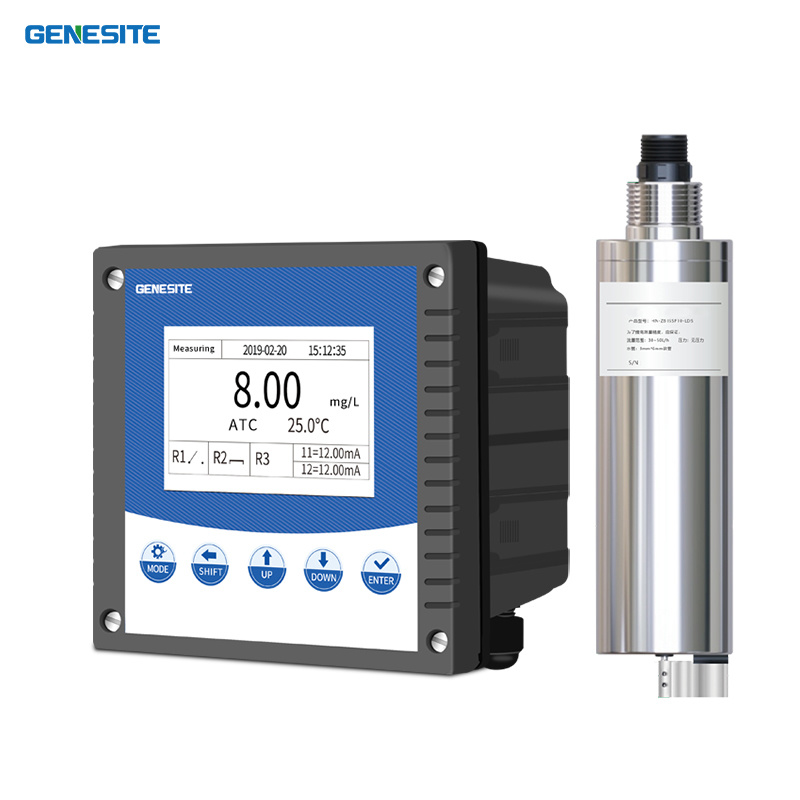Understanding Turbidity Detectors: Essential Tools for Environmental Monitoring
Apr 15,2025

Turbidity detectors are instruments designed to measure the cloudiness or haziness of a liquid, typically water. This cloudiness is caused by the presence of suspended particles, such as silt, algae, and other organic matter. By quantifying turbidity levels, these detectors provide essential data for environmental monitoring, water treatment processes, and compliance with regulatory standards.
One of the fundamental principles behind turbidity detection is the scattering of light. Most turbidity detectors operate using a light source that illuminates the water sample. As the light passes through the sample, it encounters suspended particles, which scatter the light in different directions. The amount of scattered light detected by the instrument correlates with the concentration of suspended particles, allowing for the calculation of turbidity, usually expressed in Nephelometric Turbidity Units (NTU).
In environmental monitoring, turbidity detectors are vital for various applications. They are commonly used in water quality testing for lakes, rivers, and reservoirs, helping determine the health of aquatic ecosystems. High turbidity levels can indicate pollution, sediment runoff, or algal blooms, all of which can adversely affect aquatic life. Additionally, turbidity is a critical parameter in drinking water treatment, where maintaining low turbidity levels is essential to ensure water safety and compliance with health regulations.
Turbidity detectors are also increasingly utilized in industrial applications, such as wastewater treatment and process monitoring. In these settings, maintaining optimal turbidity levels can enhance operational efficiency and reduce environmental impacts. By integrating turbidity detection into automated systems, industries can achieve real-time monitoring, facilitating timely interventions when turbidity levels exceed acceptable thresholds.
One of the key advantages of turbidity detectors is their ability to provide immediate feedback on water quality. This real-time data empowers professionals to make informed decisions, whether in environmental conservation efforts, industrial processes, or public health protection. Moreover, advancements in sensor technology have led to the development of more compact, reliable, and user-friendly turbidity detectors, making them accessible for a wide range of applications.
In conclusion, turbidity detectors are indispensable tools for monitoring water quality and ensuring environmental safety. Their ability to accurately measure suspended particles in water plays a vital role in protecting ecosystems and public health. For professionals in environmental monitoring, understanding the functionality and applications of turbidity detectors is essential for effective water quality management and compliance with environmental standards. As technology continues to advance, the role of turbidity detection in various industries will only become more significant, highlighting the importance of these instruments in our efforts to safeguard the environment.
One of the fundamental principles behind turbidity detection is the scattering of light. Most turbidity detectors operate using a light source that illuminates the water sample. As the light passes through the sample, it encounters suspended particles, which scatter the light in different directions. The amount of scattered light detected by the instrument correlates with the concentration of suspended particles, allowing for the calculation of turbidity, usually expressed in Nephelometric Turbidity Units (NTU).
In environmental monitoring, turbidity detectors are vital for various applications. They are commonly used in water quality testing for lakes, rivers, and reservoirs, helping determine the health of aquatic ecosystems. High turbidity levels can indicate pollution, sediment runoff, or algal blooms, all of which can adversely affect aquatic life. Additionally, turbidity is a critical parameter in drinking water treatment, where maintaining low turbidity levels is essential to ensure water safety and compliance with health regulations.
Turbidity detectors are also increasingly utilized in industrial applications, such as wastewater treatment and process monitoring. In these settings, maintaining optimal turbidity levels can enhance operational efficiency and reduce environmental impacts. By integrating turbidity detection into automated systems, industries can achieve real-time monitoring, facilitating timely interventions when turbidity levels exceed acceptable thresholds.
One of the key advantages of turbidity detectors is their ability to provide immediate feedback on water quality. This real-time data empowers professionals to make informed decisions, whether in environmental conservation efforts, industrial processes, or public health protection. Moreover, advancements in sensor technology have led to the development of more compact, reliable, and user-friendly turbidity detectors, making them accessible for a wide range of applications.
In conclusion, turbidity detectors are indispensable tools for monitoring water quality and ensuring environmental safety. Their ability to accurately measure suspended particles in water plays a vital role in protecting ecosystems and public health. For professionals in environmental monitoring, understanding the functionality and applications of turbidity detectors is essential for effective water quality management and compliance with environmental standards. As technology continues to advance, the role of turbidity detection in various industries will only become more significant, highlighting the importance of these instruments in our efforts to safeguard the environment.
TAG:
PREVIOUS:
Contact Us
E-mail :
andrew@genesit1.com
Phone:
+8615896508337
Address:
Chanhe Industrial Park,LuoYang City, Henan Province,China


